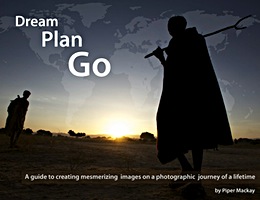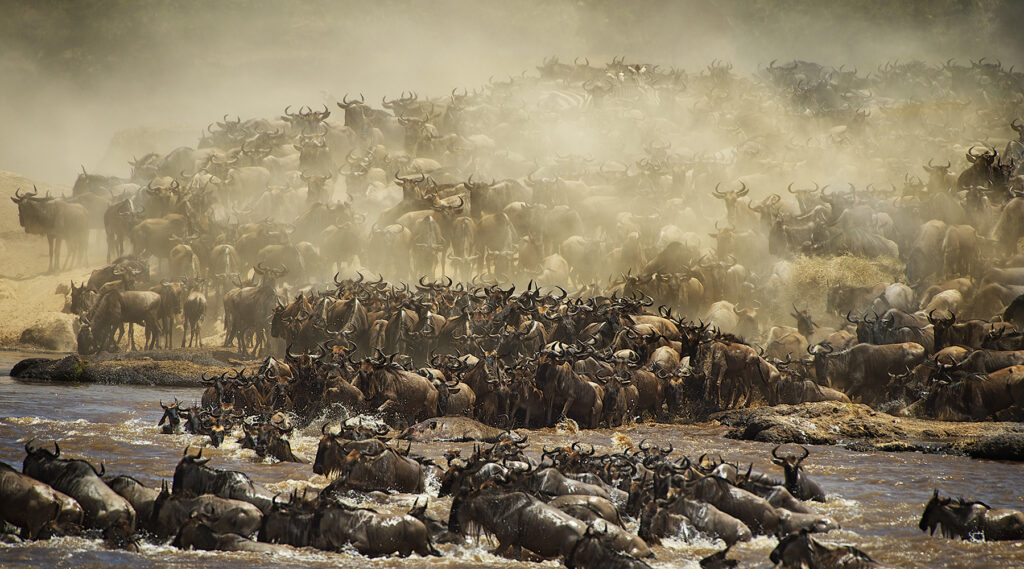
My addiction to witnessing the great migration started with my first safari to Tanzania back in 2004.
Each year, between June and October, approximately 1.5 million wildebeest, 400,000 zebras, and 200,000 gazelles migrate from Northern Tanzania through the Mara, chasing the rain and eating the tall grasses as they come from and return to the Serengeti in Tanzania. Our luxury mobile tent camp in the Serengeti was positioned in the middle of the migration. It seemed like we were surrounded by millions of animals. I had watched countless films, but nothing prepared me for such an extraordinary and indescribable experience. It was 3 days in when I decided I needed to leave my career and become a wildlife photographer—more on that here.
Not only is the Great Migration the most exciting, heart-pounding wildlife safari in Africa, but it is also arguably the greatest wildlife photography experience in the natural world. This giant moving feast brings out all the predators, creating one of nature’s most astonishing dramas. However, read further.
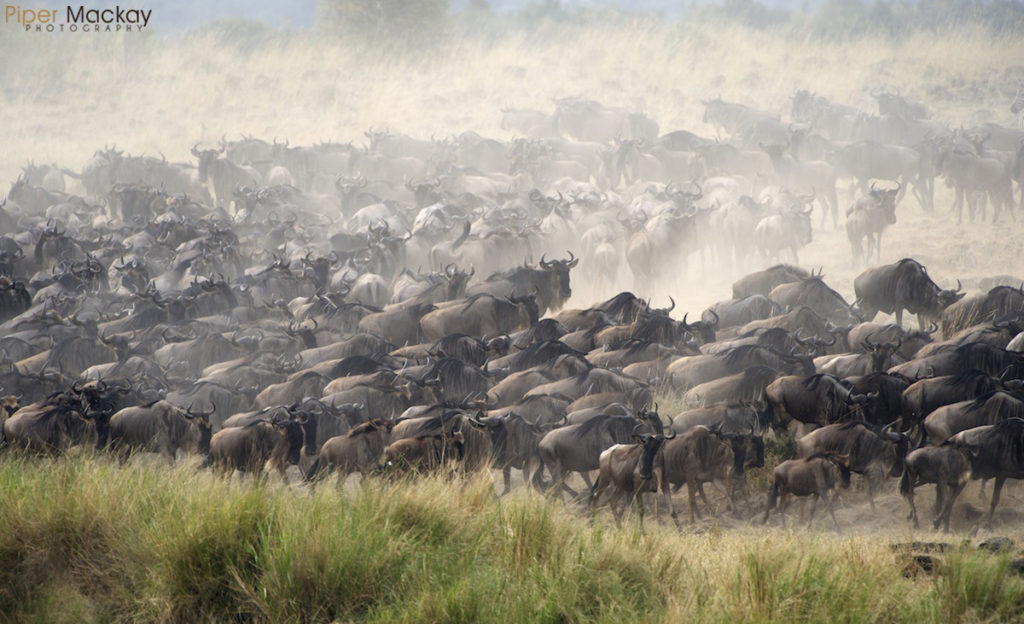
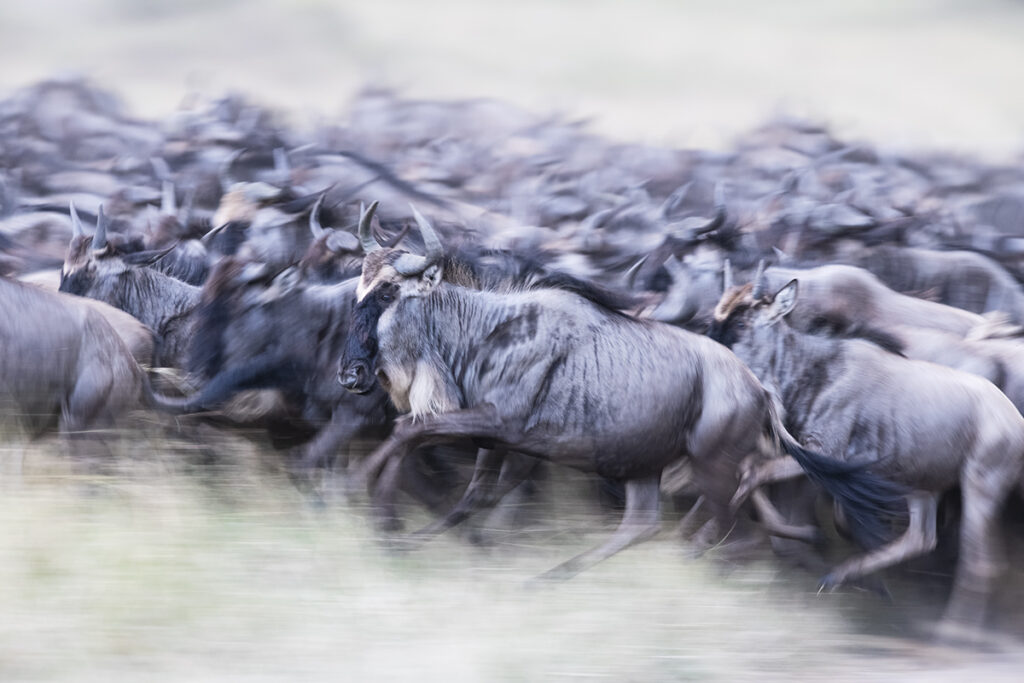
Mind-blowing photographs
The highlight of the migration is seeing the main event as the mass herds catapult into the mighty croc-infested waters of the Mara River. If you have not seen a crossing in person, trust me no photographs or documentary will do it justice. It’s like trying to capture the enormity of the Himalayas in a photograph or trying to capture the actual sensation of bungy jumping with a video. However, the photographs one can create during a crossing are mind-blowing.

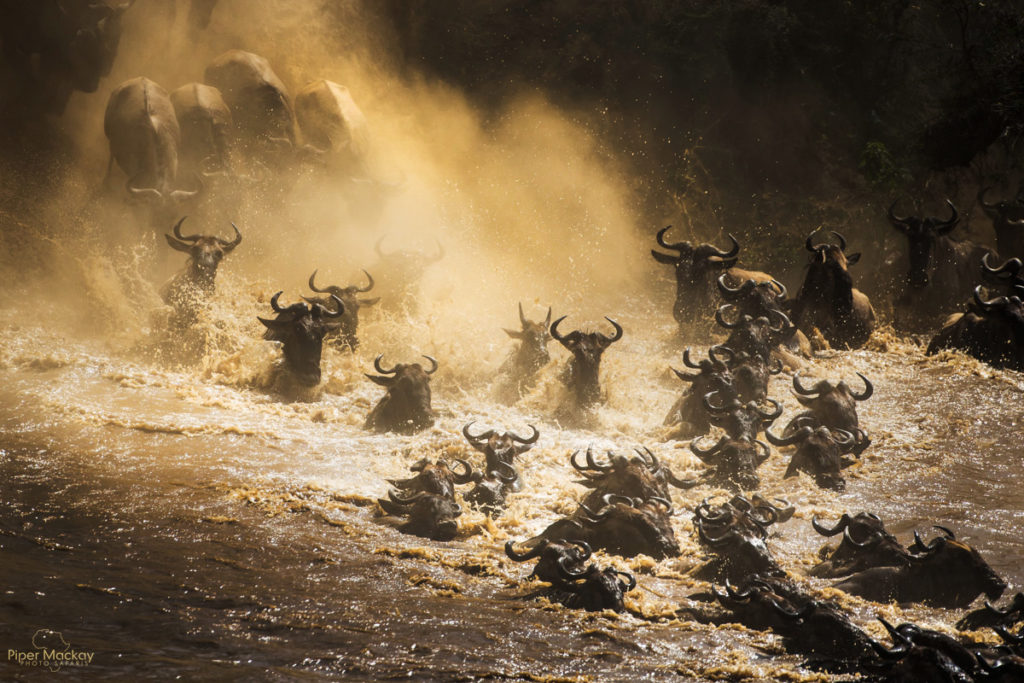
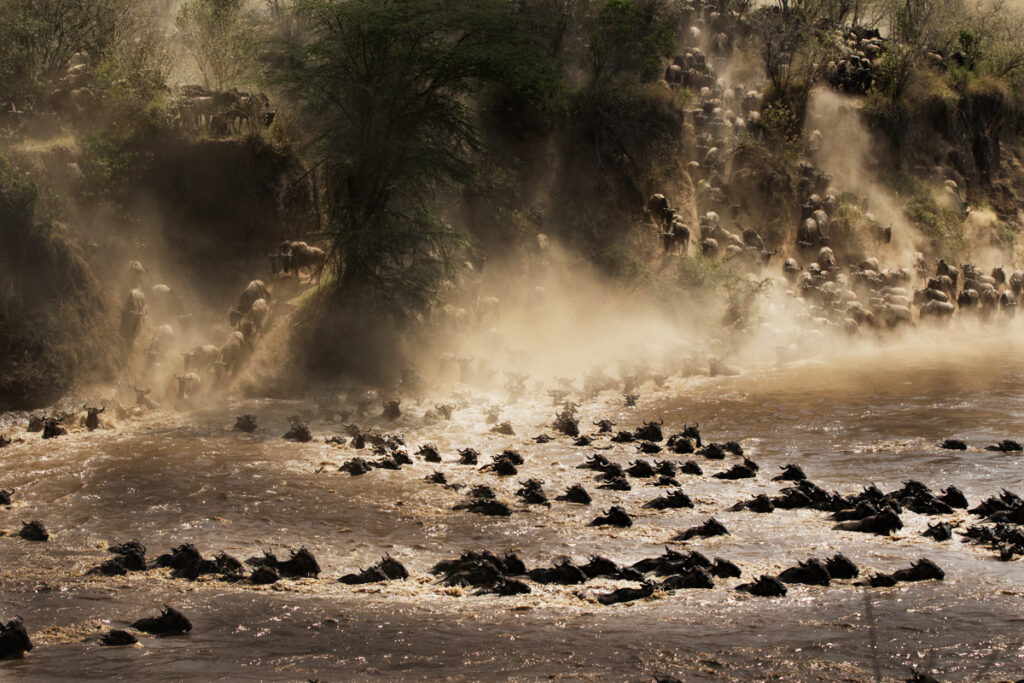
The good, bad, and ugly
Climate change, as mentioned in a recent post, has started to disrupt the patterns of migration. For decades they entered the Mara in the same way and moved across the plains in the same pattern. Witnessing a crossing was easier and more predictable. It seems sensible if the migrations follow the rains, as this is what brings up the good grasses, if the rain patterns change, so will the patterns of the migration. In 2015, due to the El Nino rains, it was the first time we missed a crossing. I then changed my itinerary to stay in three locations in the Mara, on both sides of the river for 11 days, to give photographers the best chance to see a crossing. Even so, in the past three years, the patterns have been so different that the animals did not even use some of the main crossing points. Staying in three different locations has proven to be necessary for photographers to see the migration and hopefully get a crossing.
Since this is one of the grandest wildlife experiences in the world, the whole world wants to see it. Therefore, the Mara is very crowded during the migration season. Having extremely experienced and talented photographic guides, custom photographic vehicles and location is critical during this season. I also suggest preparing well in advance and practicing your skills. Many times, you have only seconds to take a shot! Last year I wrote a post about the best big lens for a wildlife safari.
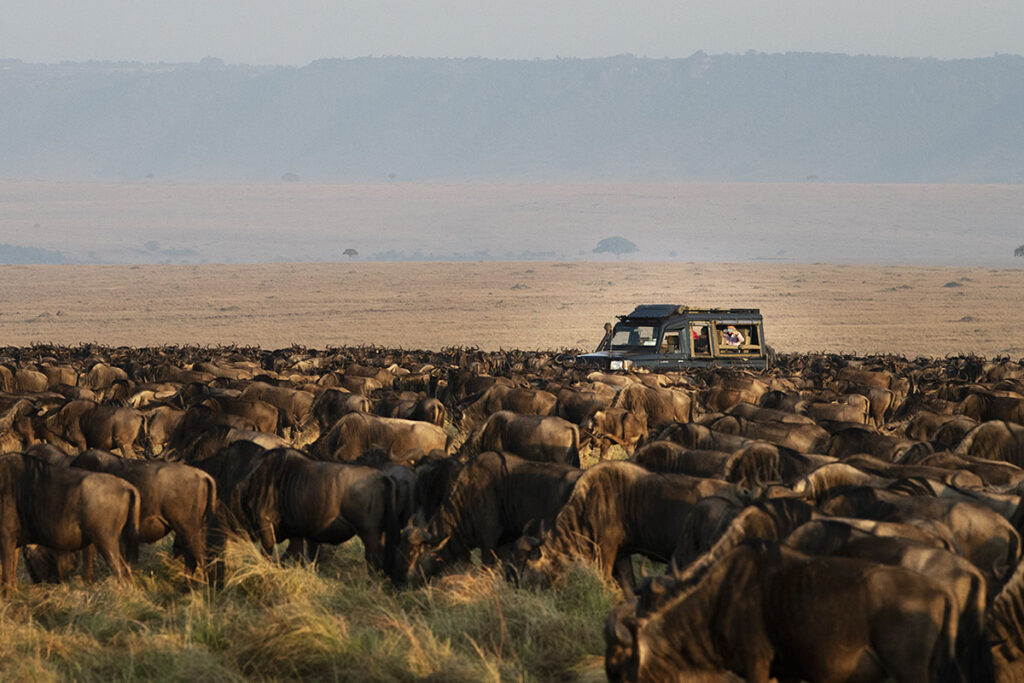
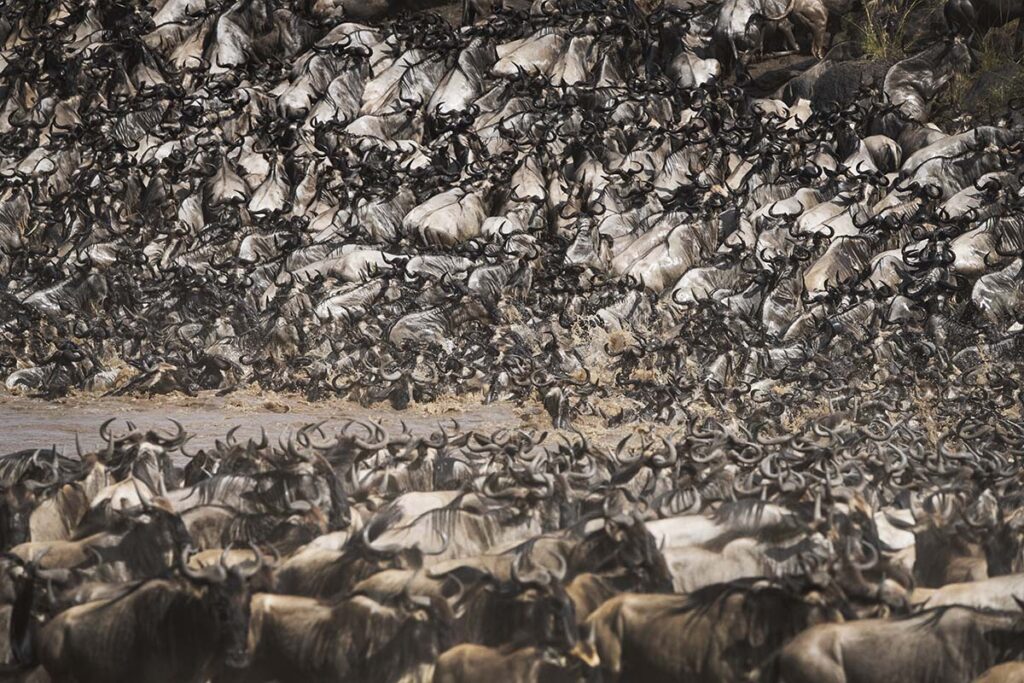
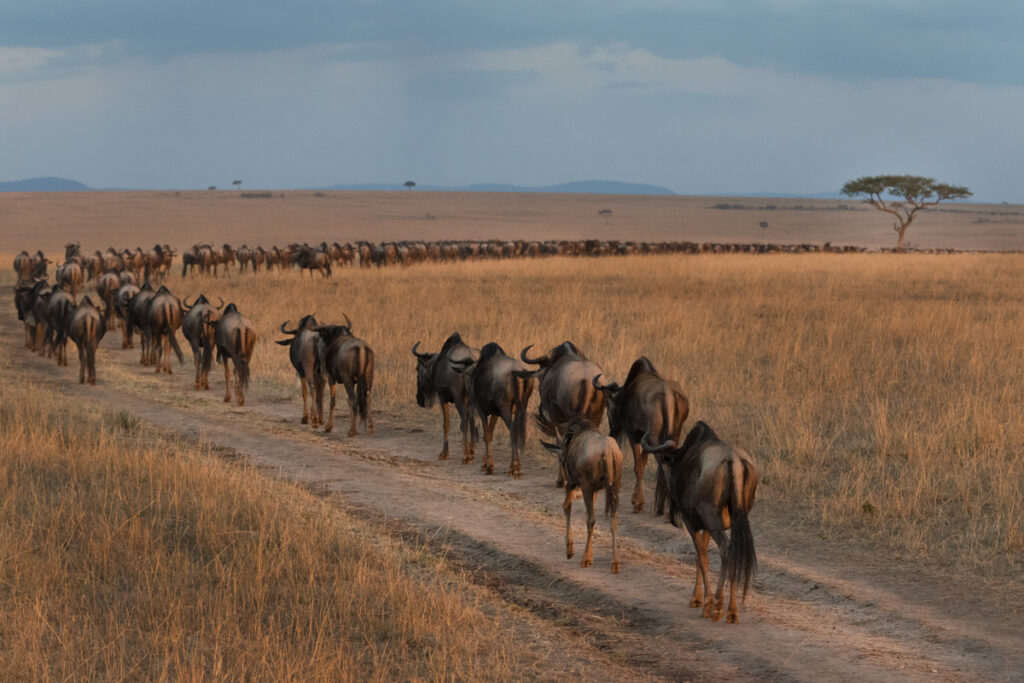
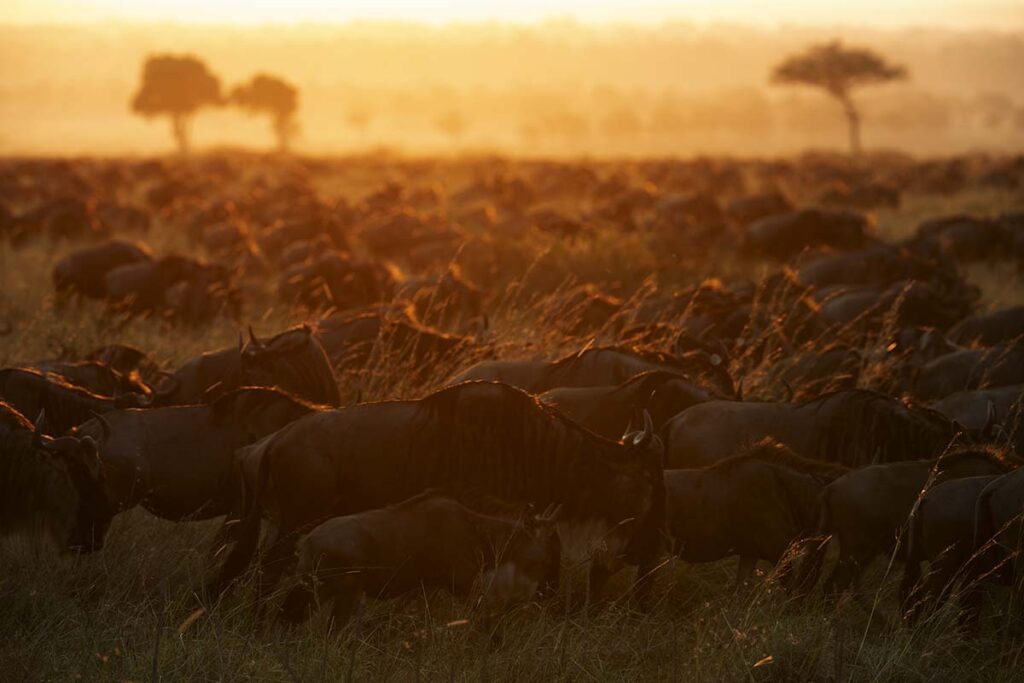
Year by year
The crowds in the Mara during the migration season are a very pressing topic in Kenya now. What most of us would like to see is a significant reduction in the number of vehicles so that stricter rules can be enforced, which would provide everyone with a better experience and reduce the stress on the wildlife and guides. Prices would increase in park fees by two or three times, and in bed rates (essentially rent), which may increase accommodation prices. However, a migration safari is expensive, so I believe it would be better to pay a little more and have a much better experience. I am going to offer my annual 11-day, 3-location migration safaris again in 2024. With 17 years of experience, I know that the migration is the most exciting safari anywhere, but if there is not a reduction in vehicles by 2025, I may alter the itinerary or pull back from the migration season if the experience declines as the world opens again. If this experience is on your bucket list, please do not put it off or you may find you never get to cross it off. Things are changing quickly!
Goals Matter
If your goal is NOT about creating dramatic migration and crossing images, but beautiful low angle and dramatic wildlife images as the ones below, then I highly suggest you visit the mara in the off-season. Due to the crowds during the migration and the high density of vehicles photographs like the ones below would be quite impossible during migration season.
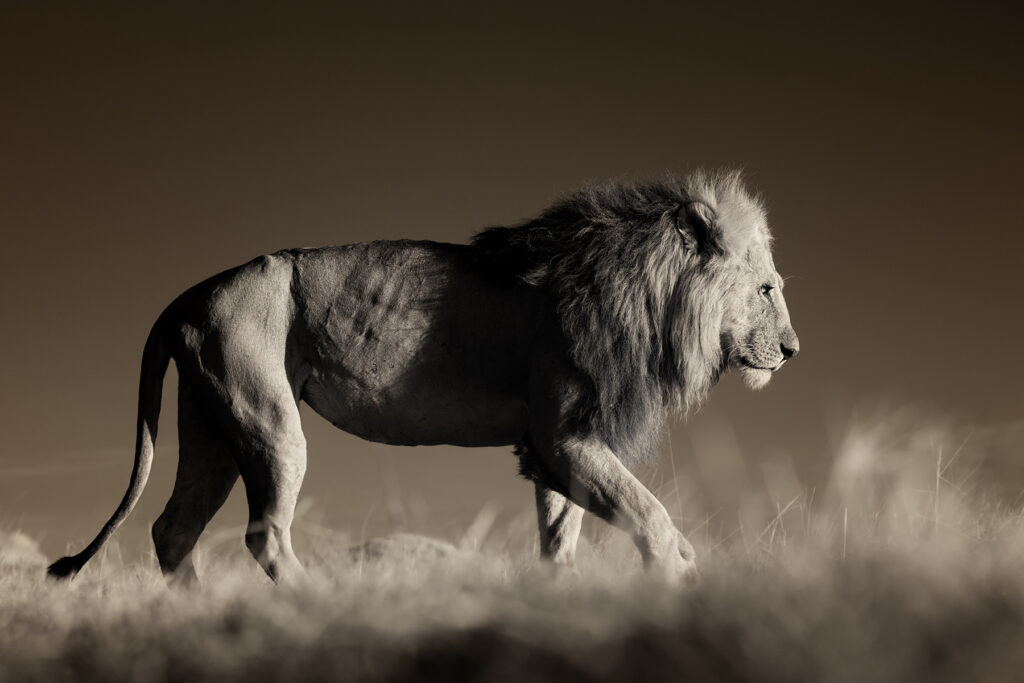
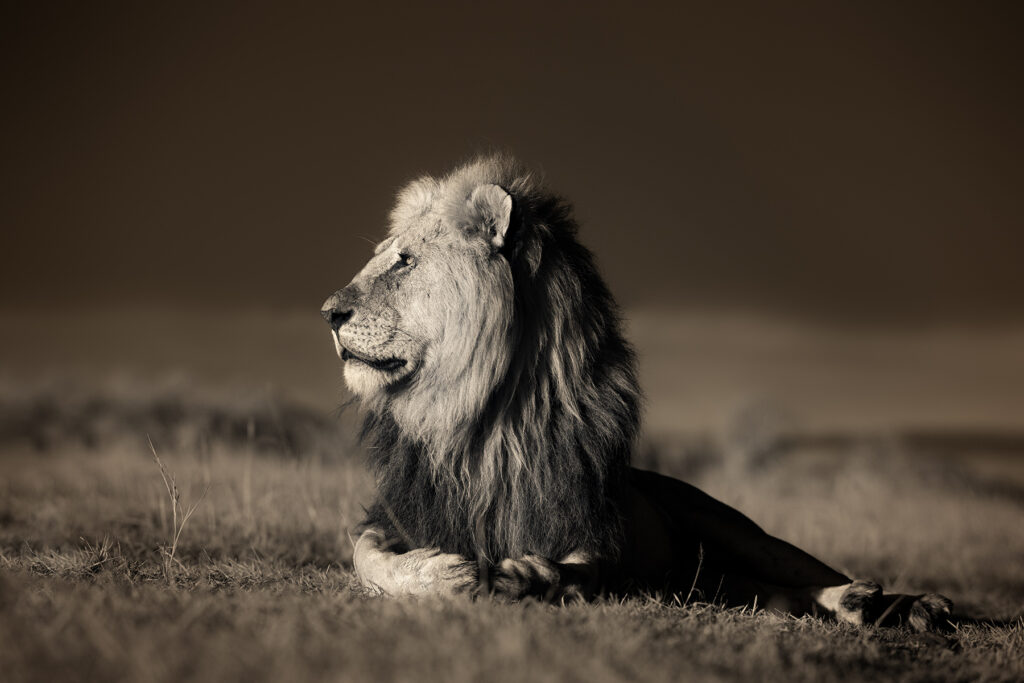
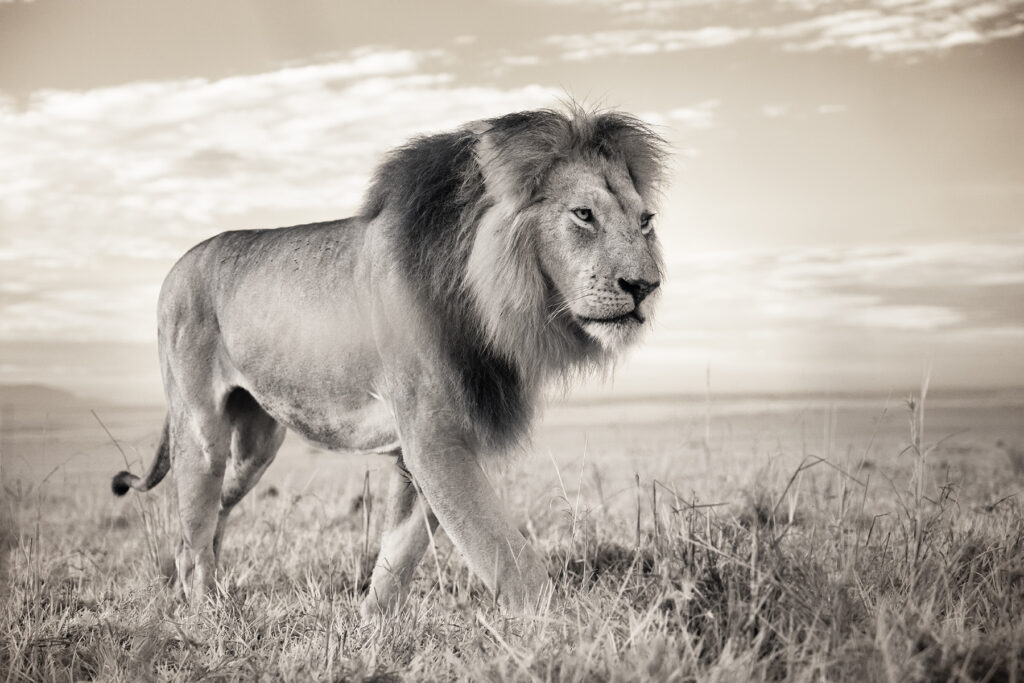
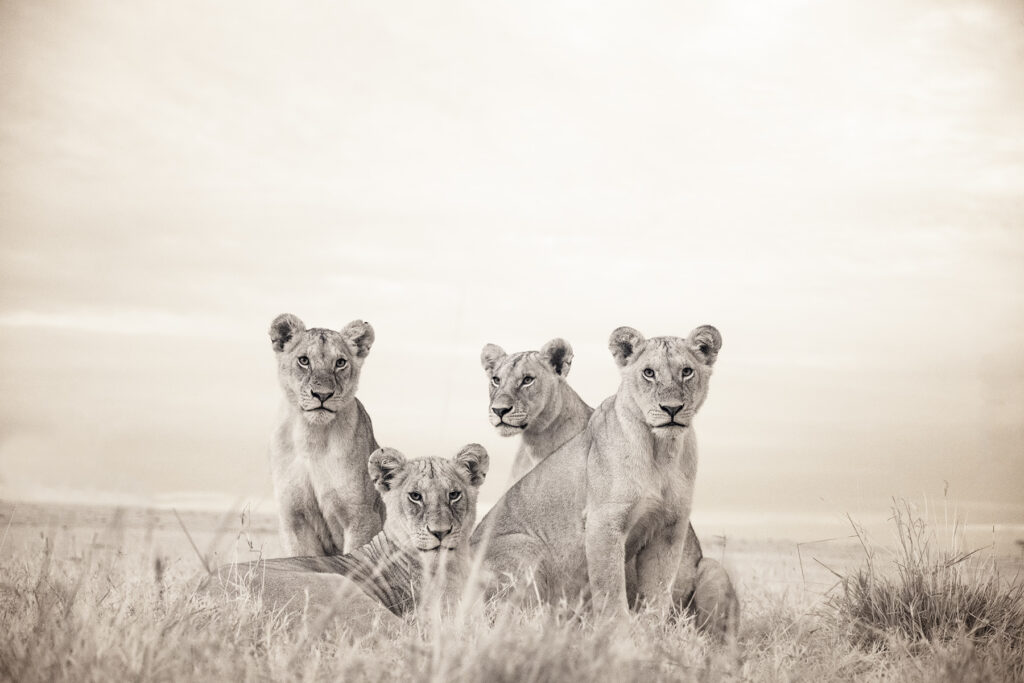
My favorite months to be in the Mara
The Mara is still one of the greatest wildlife reserves all year round. It is lush with wildlife and is the best for big cats! This is why most of us wildlife photographers spend more time in the Mara than in other reserves. Some of my favorite months to be in the Mara are December to March and then October. These are the times when there is much lower vehicle density, mostly photographers, and you can work on special low-angle and wide-angle shots and not have other vehicles in your images. This is why the Maasai Mara workshop is planned to occur in March when you can focus on creative and dramatic wildlife images. It is also the perfect way to hone in on your skills and prepare for a migration safari.

